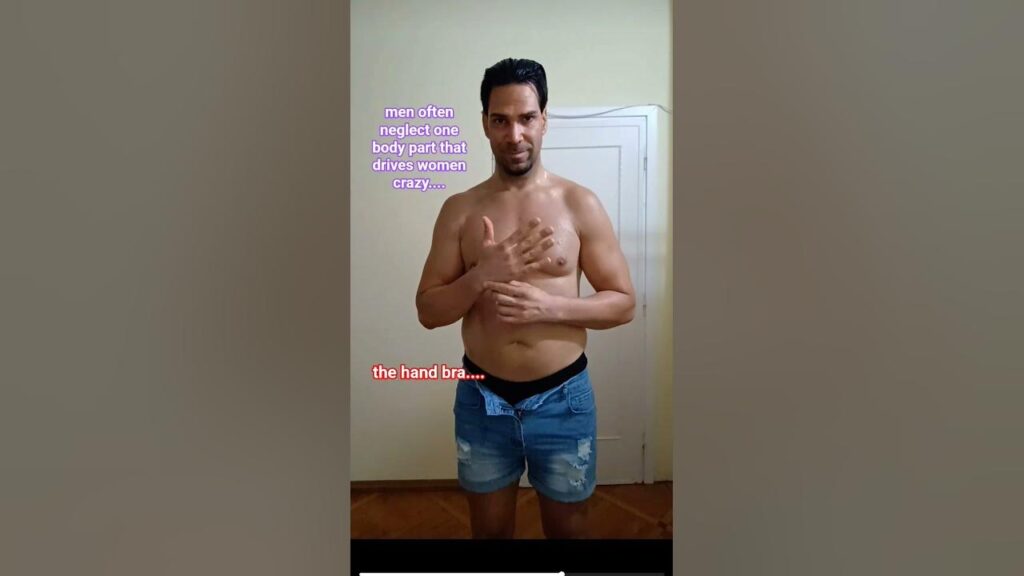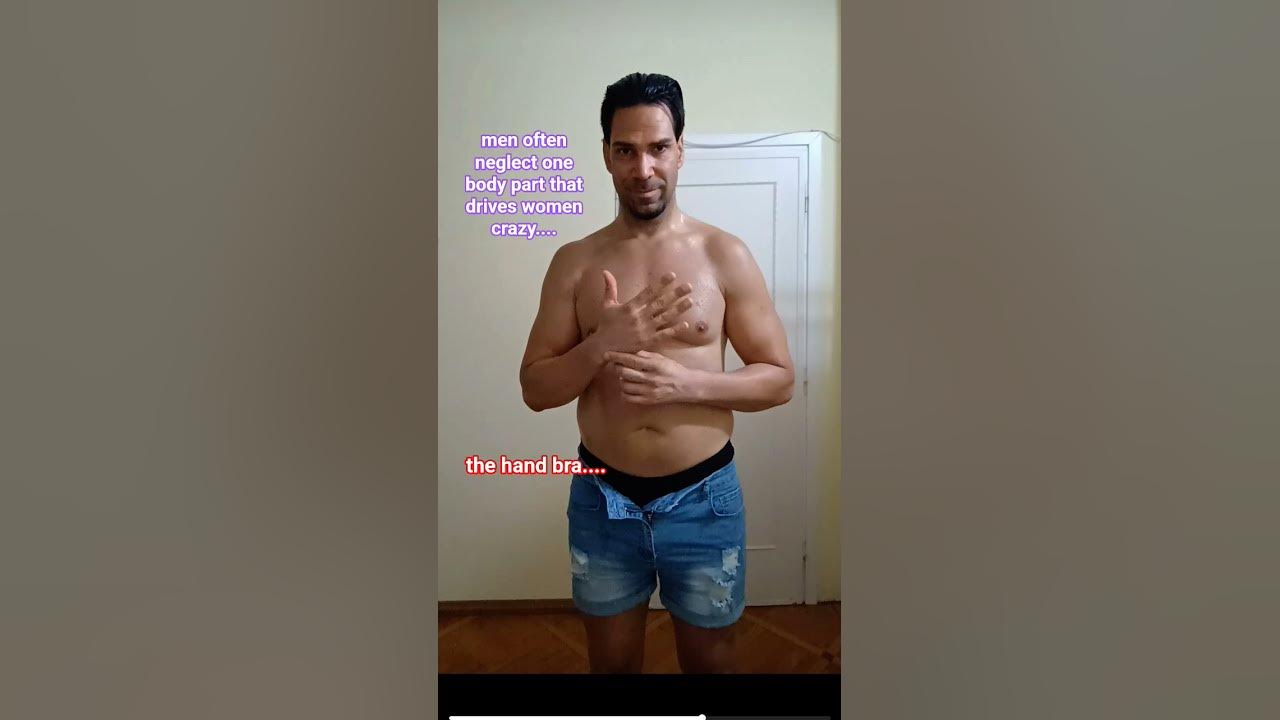
Hand Bra: Exploring the Trend, Techniques, and Ethical Considerations
The “hand bra,” a pose where hands are strategically placed to cover the breasts, has become a recurring trend in photography, social media, and even art. While seemingly simple, the hand bra presents a complex interplay of sexuality, body image, artistic expression, and cultural norms. This article delves into the origins, techniques, variations, and ethical considerations surrounding the hand bra trend, examining its impact on individuals and society.
Origins and Evolution of the Hand Bra
The concept of using one’s hands to partially or completely cover the breasts isn’t new. Historically, it can be traced back to classical art, where modesty or vulnerability was often portrayed through gestures of covering. In modern times, the hand bra gained traction through celebrity photoshoots and editorial spreads. The rise of social media platforms like Instagram and TikTok further popularized the trend, with countless individuals recreating and sharing their own versions.
The appeal of the hand bra likely stems from a combination of factors. It allows individuals to express sensuality without fully exposing themselves. It can be a playful or empowering way to embrace one’s body. For some, it’s simply a visually interesting and aesthetically pleasing pose. The hand bra also offers a degree of control over how one is perceived, allowing individuals to curate their image and project a specific message.
Techniques and Variations of the Hand Bra
While the basic premise of the hand bra is straightforward, there are numerous variations and techniques that can be employed. These variations often depend on the desired effect, the photographer’s vision, and the individual’s comfort level. Some common techniques include:
- The Classic Hand Bra: This involves using both hands to fully cover the breasts, typically with the fingers slightly spread for a more natural look.
- The Partial Hand Bra: Here, the hands partially cover the breasts, leaving some cleavage visible. This variation often emphasizes the curves and contours of the body.
- The One-Handed Hand Bra: This involves using a single hand to cover one breast, leaving the other partially or fully exposed. This can create a more asymmetrical and dynamic composition.
- The Cross-Armed Hand Bra: In this variation, the arms are crossed in front of the chest, with the hands covering the breasts. This can create a sense of modesty or vulnerability.
- The Behind-the-Head Hand Bra: The hands are placed behind the head, with the elbows angled forward, creating a natural lift and coverage for the breasts.
Lighting, posing, and camera angles also play a crucial role in the overall effect of a hand bra photo. Soft, diffused lighting can create a flattering and sensual mood, while dramatic lighting can add a sense of drama and intrigue. The angle at which the photo is taken can also significantly impact the perceived size and shape of the breasts. Experimentation is key to finding the techniques and variations that work best for each individual.
Ethical Considerations and Cultural Impact
The hand bra, like any form of self-expression, raises ethical considerations and has a cultural impact that warrants examination. One key concern is the potential for objectification and sexualization of women. Critics argue that the hand bra reinforces societal pressures on women to conform to certain beauty standards and to present themselves in a sexually appealing manner. The hand bra, in this view, contributes to a culture where women’s bodies are viewed as objects of desire rather than sources of empowerment.
However, proponents of the hand bra argue that it can be a form of empowerment, allowing individuals to reclaim their bodies and express their sexuality on their own terms. They argue that the hand bra can be a way to challenge traditional notions of modesty and to celebrate body positivity. The key, they argue, is agency and consent. When the hand bra is a conscious and deliberate choice made by an individual, it can be a powerful statement of self-expression.
Another ethical consideration is the potential for exploitation, particularly in the context of professional photography. Models may feel pressured to perform a hand bra pose, even if they are uncomfortable with it. It’s crucial that photographers and other industry professionals prioritize the well-being and consent of their subjects. Clear communication, mutual respect, and a safe working environment are essential to prevent exploitation. [See also: Modeling Industry Ethics]
The cultural impact of the hand bra is also evident in the way it is perceived across different cultures and communities. In some cultures, the hand bra may be seen as taboo or inappropriate, while in others, it may be more widely accepted. These cultural differences highlight the subjective nature of beauty standards and the importance of respecting diverse perspectives. [See also: Cross-Cultural Body Image]
The Hand Bra in Art and Photography
The hand bra has found its way into various forms of art and photography, serving as a subject or a stylistic element. Artists and photographers often use the hand bra to explore themes of identity, sexuality, vulnerability, and empowerment. The pose can be interpreted in different ways, depending on the artist’s vision and the viewer’s perspective. In some artworks, the hand bra is used to challenge societal norms and to promote body positivity. In others, it is used to evoke a sense of intimacy and sensuality. The hand bra, therefore, becomes a tool for visual storytelling and artistic expression.
The hand bra’s presence in art and photography also raises questions about representation and the gaze. Whose perspective is being represented? Who is the intended audience? Are the subjects being portrayed in a respectful and empowering manner? These are important questions to consider when analyzing the artistic and cultural significance of the hand bra. [See also: Feminist Art Criticism]
The Hand Bra and Body Image
The proliferation of hand bra images on social media can have both positive and negative effects on body image. On one hand, it can contribute to a culture of body positivity, where individuals are encouraged to embrace and celebrate their bodies, regardless of their size or shape. Seeing diverse representations of bodies engaging in the hand bra pose can help to normalize different body types and to challenge unrealistic beauty standards. [See also: Body Positivity Movement]
On the other hand, the hand bra can also contribute to feelings of insecurity and inadequacy. The curated and often heavily edited nature of social media images can create a false sense of perfection, leading individuals to compare themselves to unrealistic ideals. This can be particularly harmful for young people who are still developing their sense of self-esteem. It’s important to remember that social media images often present a highly selective and idealized version of reality. [See also: Social Media and Mental Health]
Furthermore, the hand bra trend can inadvertently pressure individuals to conform to specific body types. While the intention may be to promote inclusivity, the trend can inadvertently reinforce the idea that certain body shapes are more desirable or aesthetically pleasing than others. It’s crucial to promote a truly inclusive and body-positive message that celebrates all body types and encourages individuals to embrace their unique beauty. The hand bra should be a choice, not an obligation.
Conclusion: Navigating the Complexities of the Hand Bra
The hand bra is more than just a pose; it’s a reflection of our complex relationship with sexuality, body image, and self-expression. While it can be a powerful tool for empowerment and artistic expression, it also carries the risk of objectification and exploitation. By understanding the origins, techniques, ethical considerations, and cultural impact of the hand bra, we can engage with this trend in a more informed and responsible manner. Whether you choose to participate in the trend or not, it’s important to be mindful of the messages it conveys and the impact it has on individuals and society.
Ultimately, the key is agency, consent, and respect. The hand bra should be a conscious and deliberate choice made by an individual, free from coercion or pressure. It should be approached with sensitivity and awareness of the potential impact on others. By fostering a culture of respect and understanding, we can navigate the complexities of the hand bra and other forms of self-expression in a way that promotes empowerment and inclusivity. The hand bra is a multifaceted phenomenon that requires thoughtful consideration and critical analysis.

